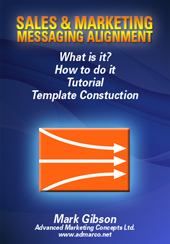Innovative and complex products are launched daily in technology centres around the World. The product promise, is to enhance our work, play, health, or longevity. Unfortunately, a great many of these innovations will be abandoned before they achieve long-term commercial success, because they won't hit their early sales targets.
The years of struggle in research & development dampened by few bad quarters, all too commonly prove to be fatal both for the product, the team and the investors. A desperate downward spiral of finger-pointing and blame occurs; Is the problem with the product, the sales team, the market, the price, the channel?
In most cases the problem is a lack of inbound-leads because interested buyers in the market couldn't find the product or understand how to use it. Another familiar problem is that sales coudn't effectively position or differentiate capabilities vs. competition and thus failed to sell it.
A significant contributor to past failure is a result of sales and marketing working in silos; speaking different languages to the customer and buyers being left to figure out for themselves how the products could create value in their environment.
Today there are much more effective ways of launching products and they require marketing and sales to work together and to learn the language of the customer, not the "product-speak" typical in technology companies.
Sales and Marketing Alignment is a framework and set of tools, which when applied to inbound marketing concepts and sales technique, changes forever the way companies sell and market products.
The process starts with identifying the buyer-persona of target-buyers and enables sellers to integrate sales and marketing messaging into business process and across all media, so that potential buyers can easily find and understand how to use the products in their environment.
An important step in improving new product introductions is to align sales and marketing messaging and to train the sales team to sell differently and for everyone in the company to use the new structure. Core process steps are:-
- Create the target buyer persona and identify buyer goals, needs and issues.
- Develop a Messaging Architecture that clearly positions the product in a competitive market and identifies core win-themes in how the products creates value when used - (your competitive DNA);
- Create buyer-relevant narratives based on addressing the needs identified in the buyer-persona that combine the "win-themes" or capabilities from the Messaging Architecture and best-practices diagnostic questions to guide conversations that enable buyers to envisage using the products to create value, achieve goals or solve problems;
- Training the sales team to use the templates and to sell consultatively, qualify more effectively and execute a formal sales process that serves both buyer and seller.
- Enabling collaboration and encouraging sales team feedback to improve team effectiveness and learn from the experience of colleagues on every call.



